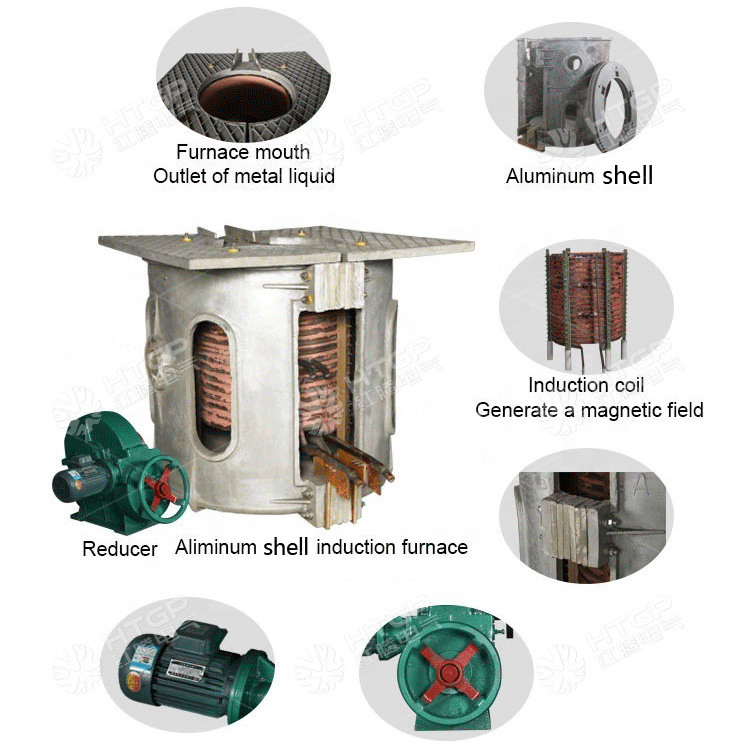8 Technical Steps for Induction Furnace Steelmaking
Induction furnace is widely used in metallurgy, casting and other industries because of its short melting time, power saving and high degree of automation.
Induction furnace is suitable for smelting high quality steel and alloy with high quality raw materials, but there are also many problems that need to be paid attention to in the smelting process. The following is a small edition of Hongteng to introduce you to the steps of induction furnace steelmaking technology.
Burden to choose
The main raw materials of smelting are scrap steel and a part of pig iron. In addition to the chemical composition, scrap steel and return charge should meet the requirements, but also have appropriate size, so that the charge can be heated effectively. For this purpose, some scraps can also be used to fill the void to improve the density of the charge in the crucible. When a molten pool is formed at the bottom of the crucible, the size of the charge has no effect on the heating effect.
charging
Because there is no oxidation period during melting, the element burn loss is very small, so it can be accurately mixed. Alloy materials that are not easy to oxidize, such as nickel and ferro molybdenum, can be added together with scrap steel. In order to improve productivity, reduce the hydrogen content in steel, and avoid the explosion of scrap steel containing moisture or grease when heating in the furnace, scrap steel can be preheated to below 550℃, the preheating temperature is too high will make the charge serious oxidation, reduce the thermal efficiency.
In discontinuous steelmaking, wet material and oily material must be added in batch for drying, and only dry material can be added after forming a molten pool. Small stoves are generally manually loaded, and the charges are loaded into the furnace with boxes or chutes. Large stoves can be loaded with conveyor belts or baskets.
The melting
We should pay close attention to the melting of the charge, constantly feed and loosen the charge timely and constantly, so that it smoothly drops to the molten pool, keep the melting in line, and avoid the appearance of bridging. The so-called “bridge” is in the semi-molten state of the charge above the molten pool bond so that the charge can not contact the molten pool. This will cause the temperature of the molten pool to rise sharply, damaging the crucible.
Once the bridge is built, the crucible can be tilted to melt the gap on the set up charge, so as to continue feeding, the steel water surface to the bridge, and the bonded charge.
Six, DNA
After full melting of the charge, temperature measurement and sampling, skilled operators can adjust the input power, correctly predict the time of temperature rise to the steel temperature, so as to coordinate the pre-furnace operation. According to the analysis result of steel sample before furnace, alloy material was added, and at the same time, ferrosilicon powder and various compound deoxidizer were used to deoxidize.
The above is the introduction of induction furnace steelmaking technology, select the appropriate charge, pay attention to the size, fill with small blocks in the middle of the large block, avoid the occurrence of bridging and other situations, affecting the smooth decline of the charge.
Luoyang Hongtang is a medium frequency core-less induction melting furnace manufacturer, core-less induction furnace is mainly used for the smelting of cast iron, cast steel and superalloy, if you have any questions about this, please leave a message or call for consultation.
Video of the use process of the furnace


